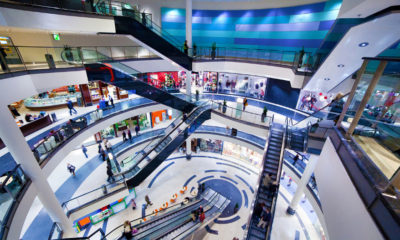As I sit in the business class lounge awaiting my flight home from Shanghai, I reflect on the question I asked my young colleague regarding our trip: What impressed you most? Despite the unhealthy air warnings and the seemingly unending flight to get here, I found the trip offered me an eye-opening glimpse of retail in China that has evolved much since my last visit here in 2011.
Over the course of an action packed, four-day visit with our client, we visited many malls and traversed HuaiHai Road from one end to the other. Two large themes emerged within the stores that impacted me most and echoed the global conversation on retail trends.
The first was a concerted response to consumer demand for experience and engagement. The second was the high level of adoption for mobile pay and the prolific use of QSR codes as a means to interact with consumers. (I will address the latter theme in my December blog.)
Within the overarching themes of experience and engagement, I observed four distinct approaches: integration of art and culture; distinctive product curation combined with a “hang out” space; do-it-yourself maker spaces; and pop-ups. I will focus here on the first approach only, and share three strong, but very different, examples of this fusion of art and retail.
First, we visited the K11 Mall. I will call this an example of culture as an added feature through strategic partnerships. The mall has made an obvious effort to infuse the environment with art education moments, as well as dedicated areas for exhibitions as a means of exposing their visitors to global cultures through art that they may not otherwise have access to. Ironically, a collaboration with MoMA PS11 was the feature exhibit, which almost made me feel like I never left home. Almost.
Next we came upon a clean glass storefront, visually open to what appeared to be a deconstructed interior. This was actually an eyeglass store called Gentle Monster. The store held a series of vignettes, artist installations that flowed from one to another reminiscent of a fun house, allowing visitors to wander around, through and over the installations, all while shopping the assortment of unique eyewear that was layered on, near or within them.
Advertisement
The environment created a virtual selfie festival. But the merchandising strategy was one of integration, where product and art were intermingled intimately, both equally positioned as precious gems, but still accessible. Perhaps I’m reading too much into it, but I could not help but think there was a metaphor at work about how eyeglasses and sunglasses help one view the world in a different perspective, as does art. The experience did border on the poetic.
Lastly, I will share our chance encounter with the l Do Life Art Space. I Do is a jewelry brand specializing in wedding bands and engagement rings – think Kay Jewelers for China. From the exterior, we didn’t understand what it was at first. Again, we found ourselves looking through a transparent glass storefront with clear sightlines into the space, but instead of seeing a retail environment (deconstructed or otherwise), we only saw a single massive shiny blob – like a massive Anoosh Kapoor sculpture – seemingly encompassing the entire 3-D area of this corner retail spot. The enormous polished chrome object sat only a few feet back from the storefront, nestled in a bed of rough white quartz pebbles, and extended up to the ceiling.
Well, there was no way I wasn’t going inside to check out what this was. Entering at the corner through frameless sliding glass doors, you’re invited to walk the narrow path around the object on small glass pavers placed among the white pebbles. Approaching the back of the object, you come upon an opening that allows you to enter the retail environment contained within. So quite obviously, this example is one of retail space as the art.
The interior of the blob contained an organic response to the its “geometry,” with a unique array of anthropomorphic built-in perimeter displays which showcased I Do’s product offerings. The fixtures furthered the anthropomorphic alliteration, but are finished in a polished chrome instead of the white hue found along the blob’s wall. It gave the impression of being inside a giant dinosaur egg that had been converted into a jewelry store. But the pièce de résistance was the staircase at one end of the space, where the structural stringer is a massive chrome spine with glass treads that match the path pavers we had traversed to get inside. The second floor space was more traditional in its execution, designed and merchandised much like a museum store. It offered a quiet respite from the alien nature of the space below.
Altogether, I think each of the examples provided are food for thought. The fearlessness and bold execution of the I Do Life Art Space is not executable at scale, but certainly allows the consumer to engage with the brand on a very different level while gaining a glimpse into what makes the brand tick. The equally bold and engaging approach taken by Gentle Monster has lessons that can be extrapolated for scale, including localization and brand storytelling.
The approach taken by K11 Mall is perhaps the most easily executed and allows for those strategic partnerships that so often provide the partners with the opportunity to engage with each other’s constituency, thereby expanding their respective reach. I think we’ve seen recent examples of this in the U.S., such as the Michelangelo Sistine Chapel Experience at Westfield World Trade Center in New York.
Advertisement
As I ponder all of the things I saw that I haven’t yet shared, I offer this simple thought: The tenets of great retail today is the same as great retail 40 years ago. It’s the expectations that have changed.
“Experience” is such an overused term. Simply put, retailers must create environments that excite and delight, and these environments must have a distinctive product offering curated with a sharp point of view and displayed in a visually enticing manner. Piece of cake, right? For a retailer with focus: Yes, it is. For retailers of significant scale: You must figure out how to, once again, find your soul.
Kathleen Jordan, AIA, CID, LEED AP, is a principal in Gensler’s New York office, and a leader of its retail practice with over 24 years of experience across the United States and internationally. Jordan has led a broad range of retail design projects as both an outside consultant and as an in-house designer. She has led projects from merchandising and design development all the way through construction documentation and administration, and many of her projects have earned national and international design awards. Contact her at kathleen_jordan@gensler.com.


 Headlines1 week ago
Headlines1 week ago
 Photo Gallery21 hours ago
Photo Gallery21 hours ago
 Headlines2 weeks ago
Headlines2 weeks ago
 Headlines2 weeks ago
Headlines2 weeks ago
 Sector Spotlight1 week ago
Sector Spotlight1 week ago
 Headlines1 week ago
Headlines1 week ago
 Headlines2 weeks ago
Headlines2 weeks ago
 Headlines1 week ago
Headlines1 week ago















